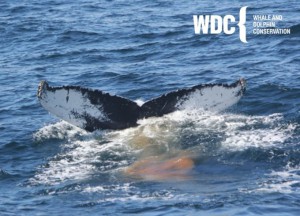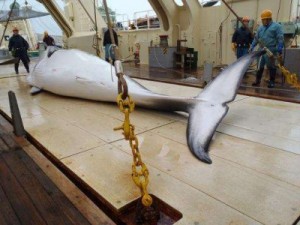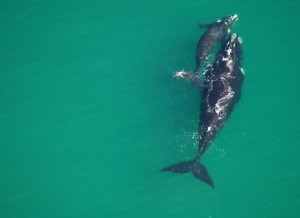At the turn of the century the Cape Whale Coast as it is known today, has played home to abundant enough whale species to justify a lucrative whaling station at Betty”s bay. Today, Southern Right Whales, Humpback Whales and Bryde’s Whales are the only visitors returning to our coasts. The numbers were drastically reduced by 200 years of whaling, when whales were hunted and killed for their meat, oil and whale bone. And they became endangered.
 The only reason we have whales in the ocean today is because of the Save the Whales movement of the ’70s. It was instrumental in stopping commercial whaling, and was built on the idea that if we couldn’t save whales what could we save? It was ultimately a test of our political ability to halt environmental destruction.
The only reason we have whales in the ocean today is because of the Save the Whales movement of the ’70s. It was instrumental in stopping commercial whaling, and was built on the idea that if we couldn’t save whales what could we save? It was ultimately a test of our political ability to halt environmental destruction.
So in the early ’80s, there was a ban on commercial whaling that came into force as a result of this campaign. Whales in our waters are still low in numbers, however, because they do face a range of other human-induced threats.
Unfortunately, many people still think that whale conservationists run only on emotions because these creatures are charismatic and beautiful. This is actually a disservice, because whales are ecosystem engineers. They help maintain the stability and health of the oceans, and even provide services to human society.
Saving whales is critical to the resiliency of the oceans. It boils down to two main things: whale poop and rotting carcasses.
 As whales dive to the depths to feed and come up to the surface to breathe, they actually release these enormous fecal plumes. This whale pump, as it’s called, actually brings essential limiting nutrients from the depths to the surface waters where they stimulate the growth of phytoplankton, which forms the base of all marine food chains. So really, having more whales in the oceans pooping is really beneficial to the entire ecosystem.
As whales dive to the depths to feed and come up to the surface to breathe, they actually release these enormous fecal plumes. This whale pump, as it’s called, actually brings essential limiting nutrients from the depths to the surface waters where they stimulate the growth of phytoplankton, which forms the base of all marine food chains. So really, having more whales in the oceans pooping is really beneficial to the entire ecosystem.
Whales are also known to undertake some of the longest migrations of all mammals. Gray whales off America migrate 16,000 kilometers between productive feeding areas and less productive calving, or birthing, areas and back every year. As they do so, they transport fertilizer in the form of their feces from places that have it to places that need it. So clearly, whales are really important in nutrient cycling, both horizontally and vertically, through the oceans.
 But what’s really cool is that they’re also really important after they’re dead. Whale carcasses are some of the largest form of detritus to fall from the ocean’s surface and they’re called whale fall. As these carcasses sink, they provide a feast to some 400-odd species, including the eel-shaped, slime-producing hagfish.
But what’s really cool is that they’re also really important after they’re dead. Whale carcasses are some of the largest form of detritus to fall from the ocean’s surface and they’re called whale fall. As these carcasses sink, they provide a feast to some 400-odd species, including the eel-shaped, slime-producing hagfish.
So over the 200 years of whaling, when we were busy killing and removing these carcasses from the oceans, we likely altered the rate and geographic distribution of these whale falls that would descend into deep oceans, and as a result, probably led to a number of extinctions of species that were most specialized and dependent on these carcasses for their survival.
Whale carcasses are also known to transport about 190,000 tons of carbon, which is the equivalent of that produced by 80,000 cars per year from the atmosphere to the deep oceans, and the deep oceans are what we call “carbon sinks,” because they trap and hold excess carbon from the atmosphere, and therefore help to delay global warming. Sometimes these carcasses also wash up on beaches and provide a meal to a number of predatory species on land.
 The 200 years of whaling was clearly detrimental and caused a reduction in the populations of whales between 60 to 90 percent. Clearly, the Save the Whales movement was instrumental in preventing commercial whaling from going on, but we need to revise this. We need to address the more modern, pressing problems that these whales face in our waters today.
The 200 years of whaling was clearly detrimental and caused a reduction in the populations of whales between 60 to 90 percent. Clearly, the Save the Whales movement was instrumental in preventing commercial whaling from going on, but we need to revise this. We need to address the more modern, pressing problems that these whales face in our waters today.
Amongst other things, we need to stop them from getting ploughed down by container ships when they’re in their feeding areas, and stop them from getting entangled in fishing nets as they float around in the ocean. We also need to learn to contextualize our conservation messages, so people really understand the true ecosystem value of these creatures.
So, let’s save the whales again, but this time, let’s not just do it for their sake. Let’s also do it for ours.
Source: Marine Biologist: Asha De Vos & PlosOne












